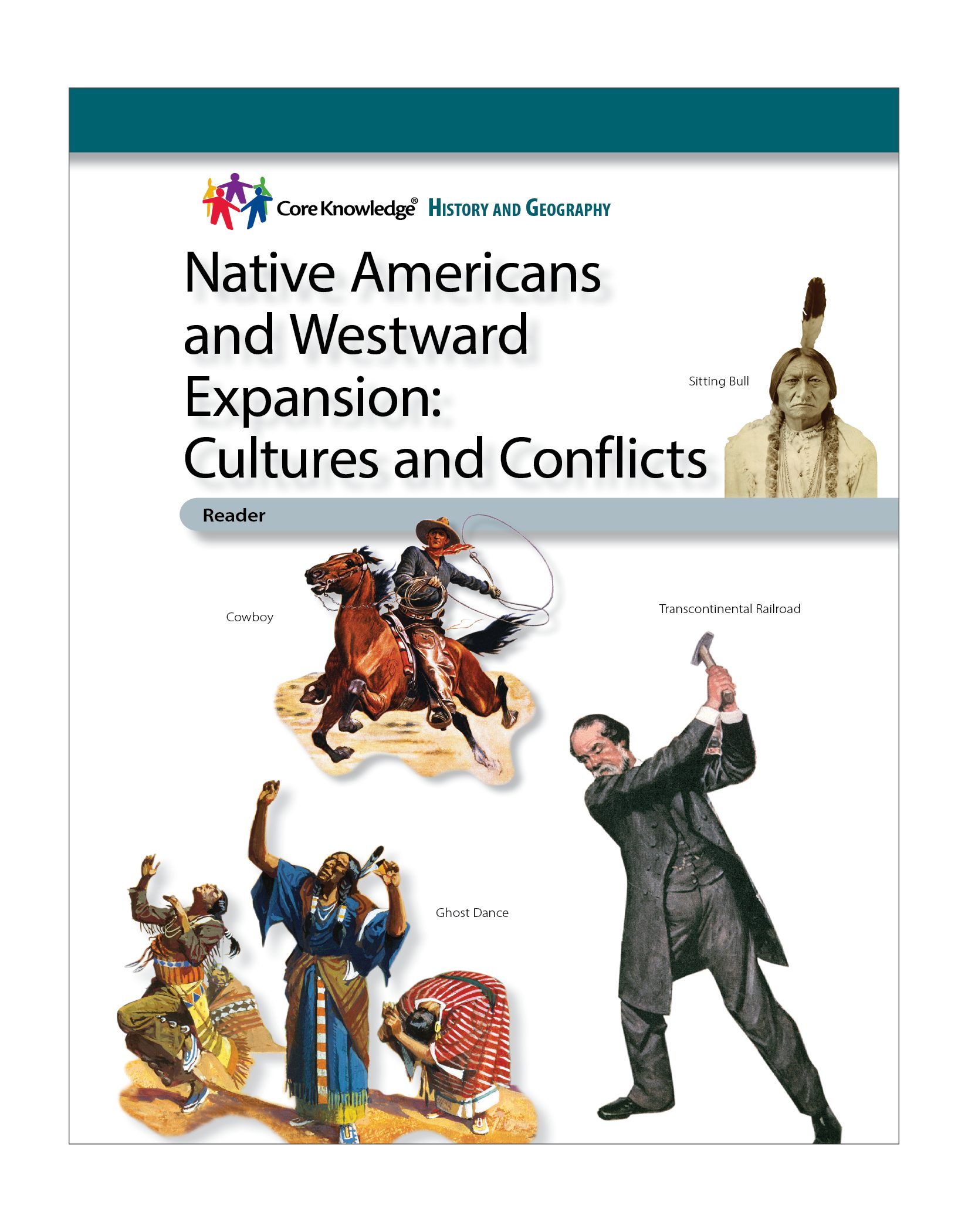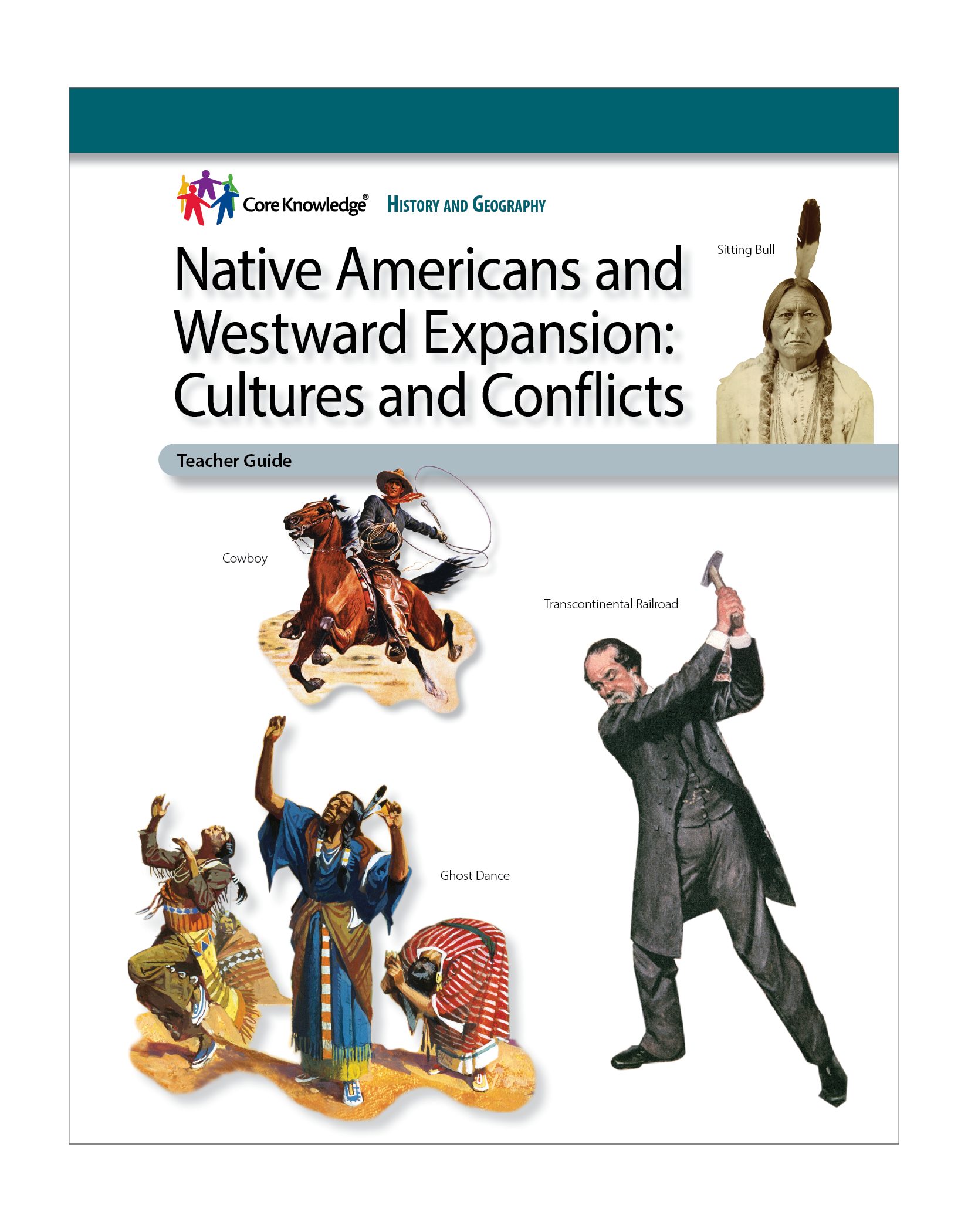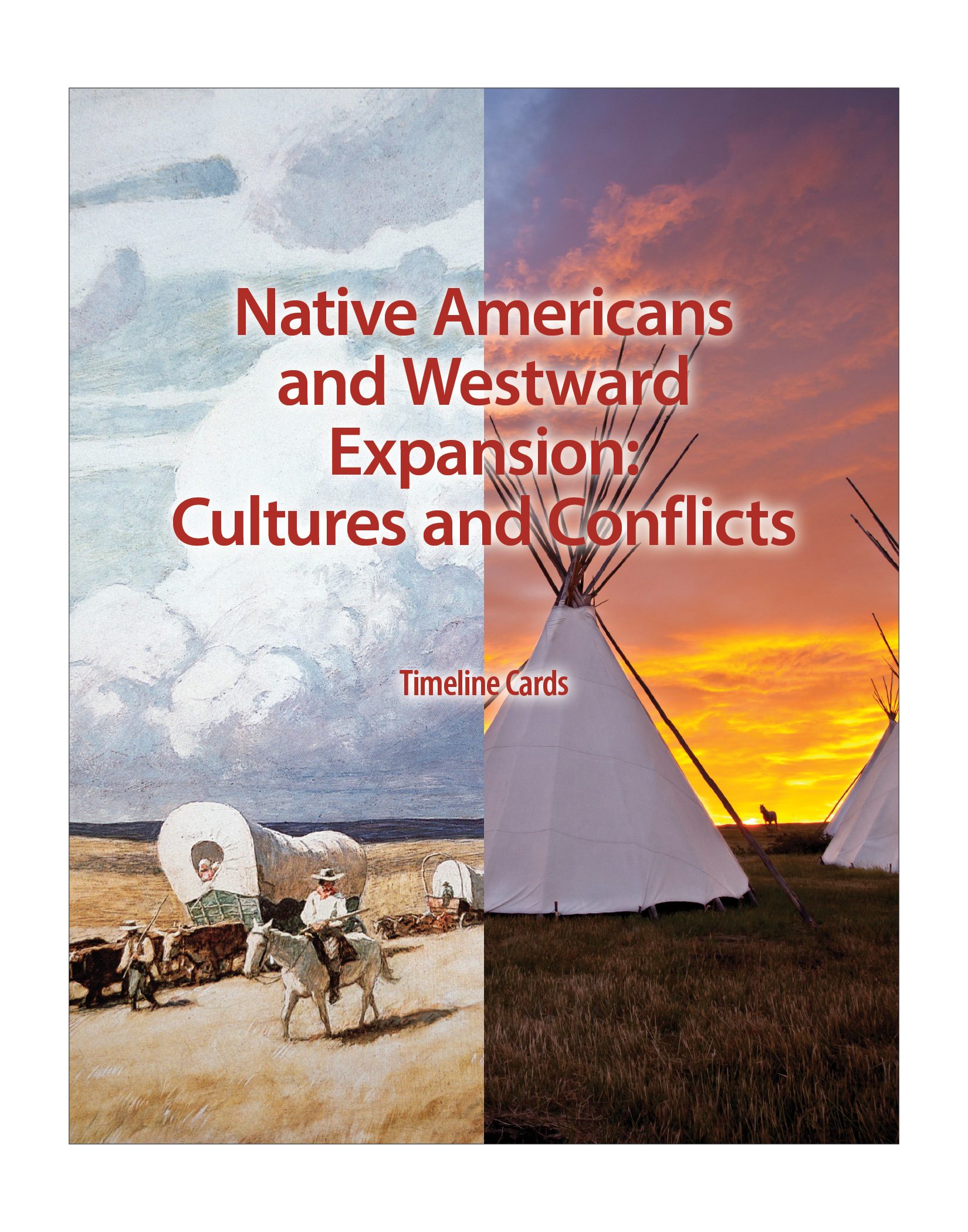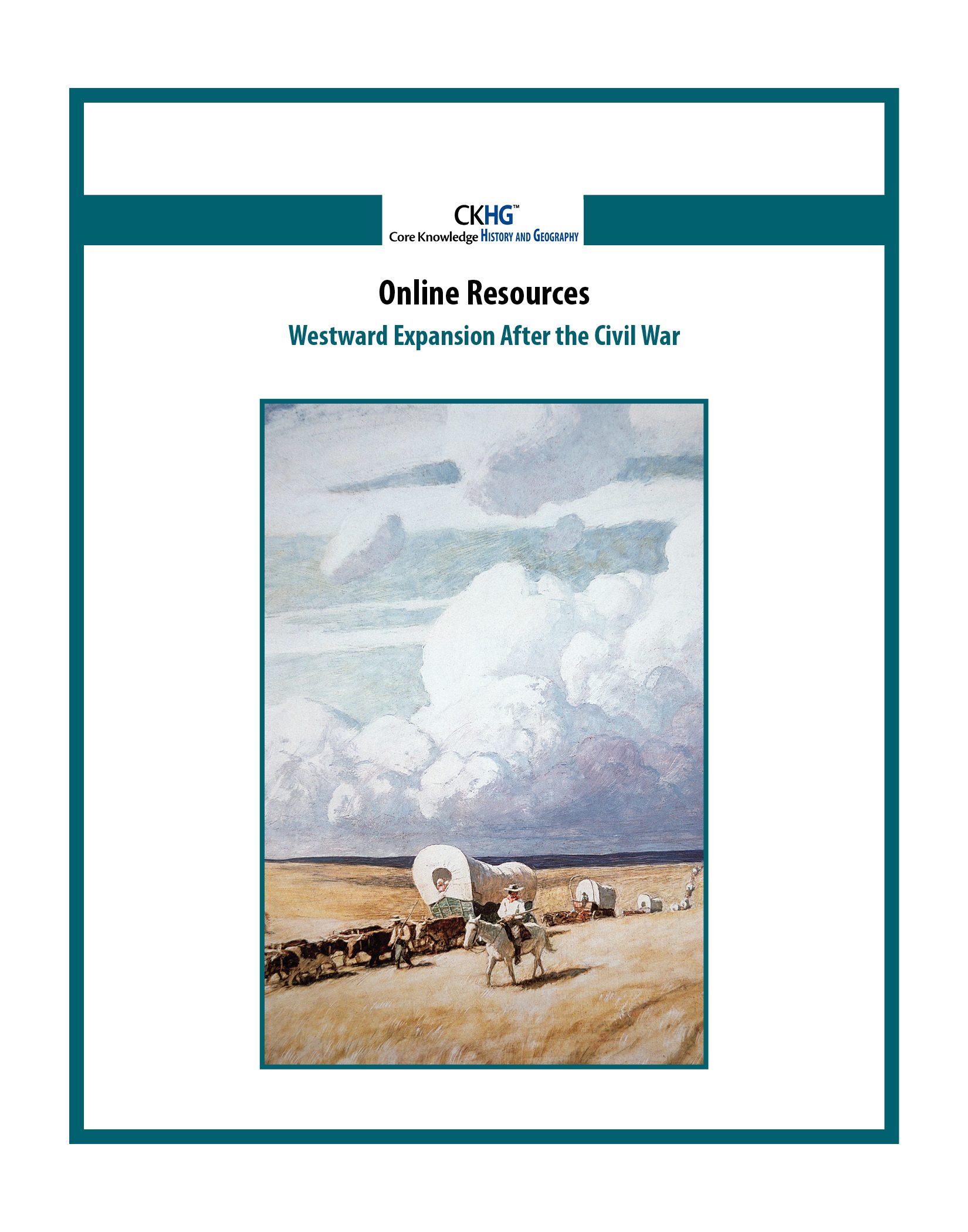
CKHG Unit 12: Westward Expansion After the Civil War
NOTE: The resources for this unit are in the first part of Native Americans and Westward Expansion: Cultures and Conflicts.
Focus:
This unit continues the story begun in Unit 10, Westward Expansion Before the Civil War, and focuses on the causes and effects of the westward movement of Americans in the latter 1800s, which often led to conflict with Native Americans displaced from lands they had long inhabited. Students learn how the prospect of gold or silver lured many adventurers westward, while millions of settlers were drawn by the Homestead Act, passed by Congress to encourage western settlement. Students consider how transcontinental railroads accelerated the settlement of the West by providing transportation for people and goods, opening new agricultural markets. Students also explore the myths and realities of cowboy life and the “Wild West.” Students learn how the United States purchased Alaska from Russia, which provided the nation with a vast territory teeming with wildlife and rich in natural resources. Students also consider the late-nineteenth century idea of the “closing of the American frontier.” Some of the content of this unit is tied to the “Pathway to Citizenship,” an array of civics-focused knowledge, questions, and activities.
Number of Lessons: 7
Instruction Time:
45 minutes (Each lesson may be divided into shorter segments.)
Additional Search Terms:
social studies • map skills • nonfiction • informational text • primary sources • Mark Twain • Golden Spike • telegraph • cattle drives • Chisholm Trail • Great Plains • stagecoach • Billy the Kid • Jesse James • Annie Oakley • Buffalo Bill • manifest




